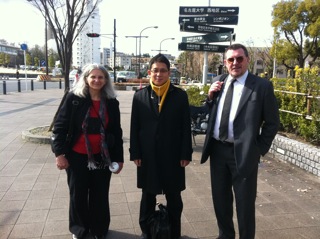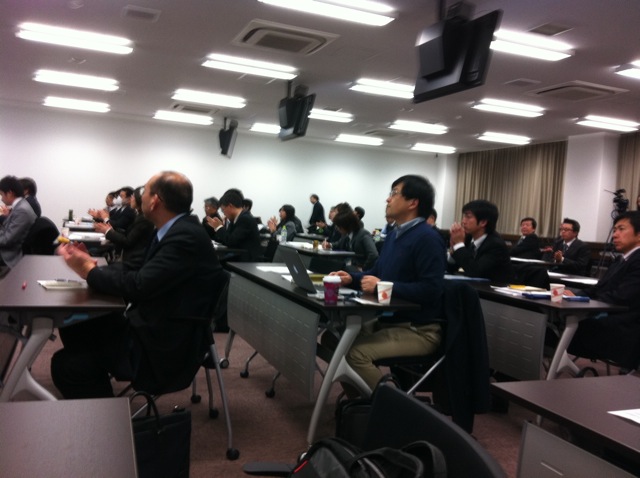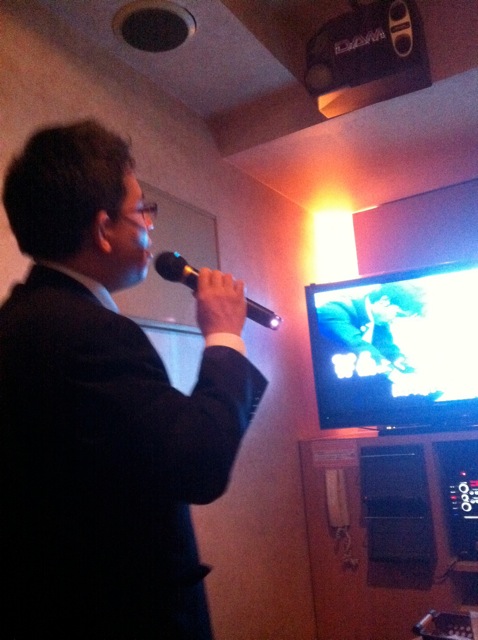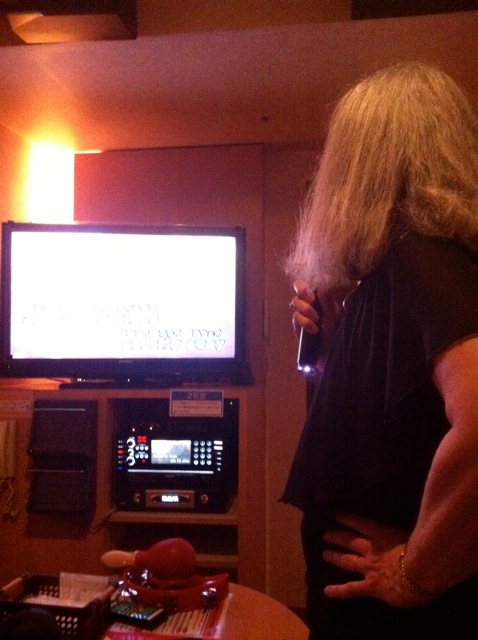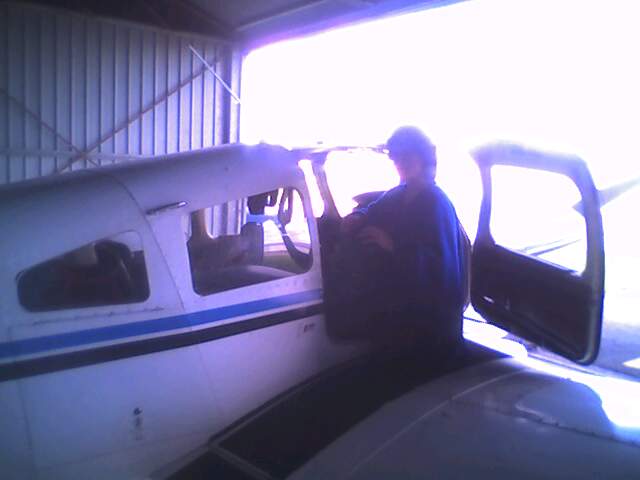 My good friend and colleague Bob Frost passed away Saturday. His office was two doors down the hall and I miss him terribly. It was always a bright moment when Bob was on his way to or from his office or in his office. There was always a steady stream of music, students, and conversation that centered around his office.
My good friend and colleague Bob Frost passed away Saturday. His office was two doors down the hall and I miss him terribly. It was always a bright moment when Bob was on his way to or from his office or in his office. There was always a steady stream of music, students, and conversation that centered around his office.
I include the letter from our dean Jeff Mackie-Mason to the University of Information School of Information family below.
I wanted to share a couple of personal stories about Bob Frost to add to the stories that others have shared.
About four weeks ago, just before waking, I was having a very nice dream. Everything in the dream was bright and the sky was blue and the weather was perfectly warm. I was totally relaxed almost like I was sitting on the porch of one of those beach front houses in the tropics that have no walls with a nice fast broadband connection. Bob burst into my dream, very much in a hurry and slightly out of breath. He was wearing a brightly-colored jacket, scarf, white hat, and his curls were flying around. He came right up to me, looked in my face and told me that everything was great and for me not to worry – that things were going to work out. He rushed out of my dream as quickly as he had rushed in. As he left I was filled with a sense of joy, calm, confidence and optimism about whatever he was talking about. While it was only a dream, it reflected what it was like to be with Bob. When you were with Bob, you felt better, smarter, confident, happier and more alive. He brightened every room he entered and made every conversation interesting even if all he was doing was listening and reflecting.
I would like to share a slightly longer non-dream story about a meeting we had back in early 2008 about the undergraduate Informatics program. Let me set the stage a bit.
Prior to 2006, the notion of the School of Information being involved in undergraduate education was viewed rather skeptically by more than a few of the faculty. Bob Frost had been teaching SI110 for many years because he was deeply committed to sharing his knowledge with as many students as possible, particularly at the undergraduate level. For many years Bob taught SI110 as a “special case” that was relatively isolated from the rest of the curriculum. He often taught the course on overload to make sure that it was taught every semester because students had come to depend on the course.
In 2006 and 2007 we started work on developing the undergraduate Informatics LSA concentration. There were several schools of thought amongst the faculty as to whether Informatics should be a narrow, focused curriculum like one of our Masters specializations or a more broad liberal arts program that had courses from across all the topics in the School of Information.
Bob preferred a broader, more expansive and inclusive approach, but his position was in the minority at the time. Bob generally stayed away from the planning for the Informatics program during 2006-2007 with Paul Conway and me going to most of the meetings while we developed the program.
As we built the Informatics concentration with Math, Statistics, and EECS, it became increasingly clear that the right approach was the more inclusive and broadly scoped curriculum and that SI110 was the ideal introductory course for the Informatics program. SI110 was chosen as one of the essential pre-requisite courses for Informatics and we would develop a series of additional undergraduate courses that would build on SI110 as their foundation. But we never exactly told Bob. I am not sure we ever sent him a draft copy of the curriculum that reflected his approach and included his course. We were not hiding anything – everyone was busy including Bob and things were moving very quickly.
At some point, we had an SI meeting to approve the final draft of the curriculum. The meeting included Martha Pollack, Michael Cohen, Paul Conway, Bob Frost and me. Bob came rushing into the meeting a bit late with his curls flying as usual. The draft curriculum was in a stack of papers in front of him. I got the sense that he expected to be presented with an undergraduate program that would not make him happy. I also sensed as he sat down that he was waiting for the bad news that we were proposing a narrow exclusive undergraduate program.
As he sat down, he wondered if Paul could give a quick summary of the proposed curriculum. Paul described the broad and inclusive Informatics concentration and told Bob that SI110 was required for all the students and that the the Informatics steering committee representatives from the School of Information, EECS, Math and Statistics all agreed that his SI110 course was core and essential and one of strong points of the Informatics concentration.
As Paul finished describing the program, Bob shot me a quick smile that immediately gave me a sense of joy, calm, confidence and optimism about the Informatics concentration. Things were going to work out just fine.
Since then, the Informatics concentration has been very successful and in three years has grown to over 120 undergraduate students. All Informatics students take SI110, and many of the students decide to select the Informatics concentration after taking Bob’s course. In my mind, if it were not for Bob and his tireless work with SI110, the Informatics program would likely have never gotten off the ground. Students always tell us how much they enjoy the concentration and how they feel that Informatics is where they belong.
March 26, 2011
Dear friends, students, colleagues,
It is with deep personal sadness that I write to tell you that Bob Frost has passed away. He expired while resting at home, with his wife — our colleague Margaret Hedstrom — and family members by his side.
As many of you know, because Bob was a delightfully transparent and honest person, he has been fighting cancer for nearly two-and-a-half years. He had remarkable courage, and fortitude (the initial prognosis was that he had less than a year to live). Bob was passionate about teaching, about his students, and about our School. He insisted on continuing to teach a full load, and even developed new courses during his illness. Remarkably, he was still in the classroom teaching SI 500 less than three weeks ago. Many generations of undergraduate and graduate students have been touched by Bob; many of them say that he had a transformative impact on their choice of major and career.
Bob was born in 1952, and received his Ph.D. in history from the University of Wisconsin in 1983. He came to Michigan as a visiting associate professor of history in 1995, and joined the SI faculty in 2000. For more information about his many publications, his teaching and his other interests, see http://www-personal.umich.edu/~rfrost/.
Bob was passionate about many things, including a passion for sharing information for the good of all. Bob and Margaret established the Frost Open Access Fund by donating the royalties that Bob receives from the works of his great-grandfather, poet Robert Frost. The fund was also named to honor Bob’s friend and colleague Olivia Frost, SI’s former interim dean and professor emerita. The Frost Fund supports innovative projects that utilize open source software, or that study or promote the open access movement.
I have known Bob since shortly after he arrived in Ann Arbor, and over the years was proud to become his friend. His death is a great loss to me, and I know it is to many of you as well; I share my sympathy with all of you.
A number of activities are planned to help us address our grief, and to remember Bob. One is a fundraiser for cancer research that his students started a week ago in honor of Bob’s battle: if you wish, you may contribute through the American Cancer Society at http://main.acsevents.org/goto/teamfrost. We will announce details of other activities soon.
For now, please join me in a moment of silent reflection in Bob’s honor. And please join me in extending support and sympathy to Bob’s loving wife, and our friend and colleague, Margaret Hedstrom.
Jeff
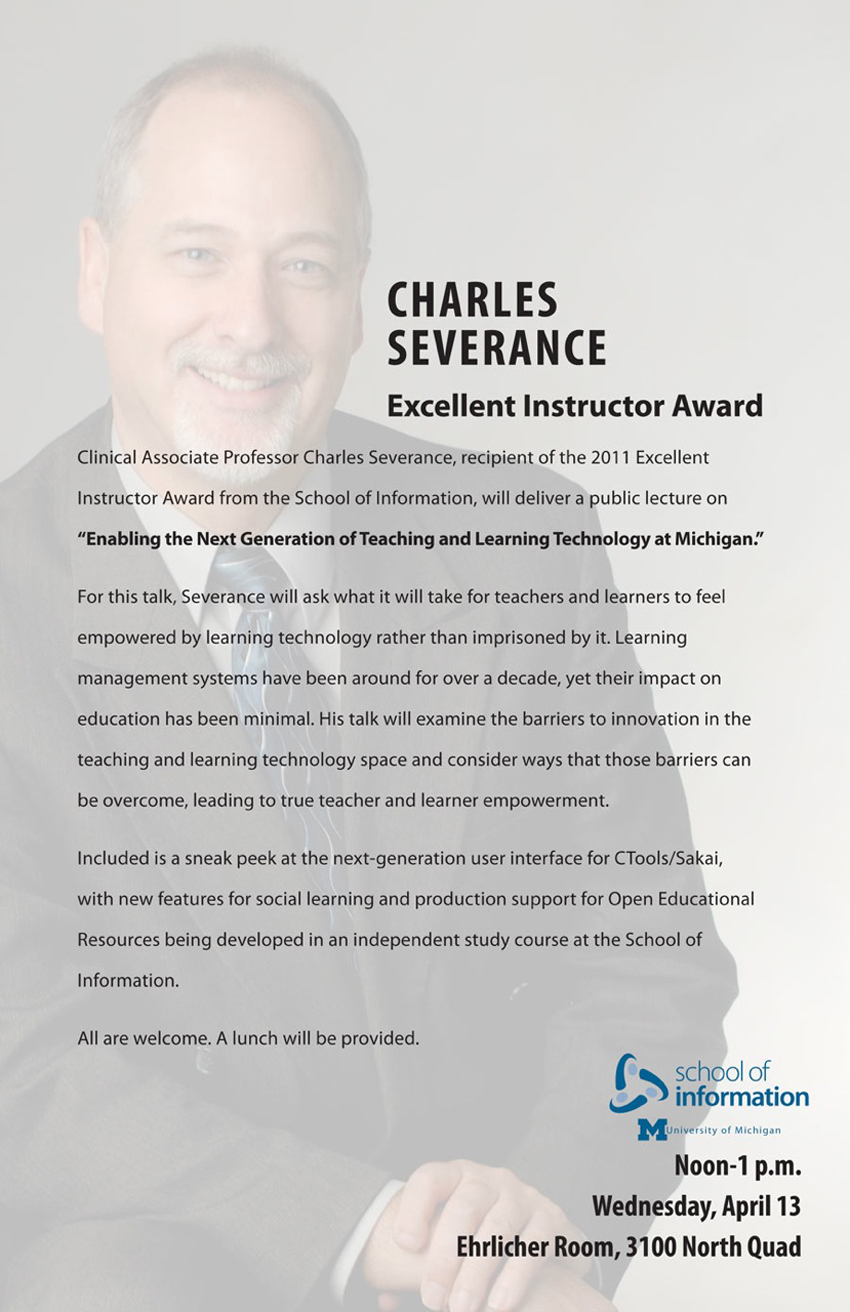 April 13, 2011 @ noon – Ehrlicher Room, North Quad
April 13, 2011 @ noon – Ehrlicher Room, North Quad
